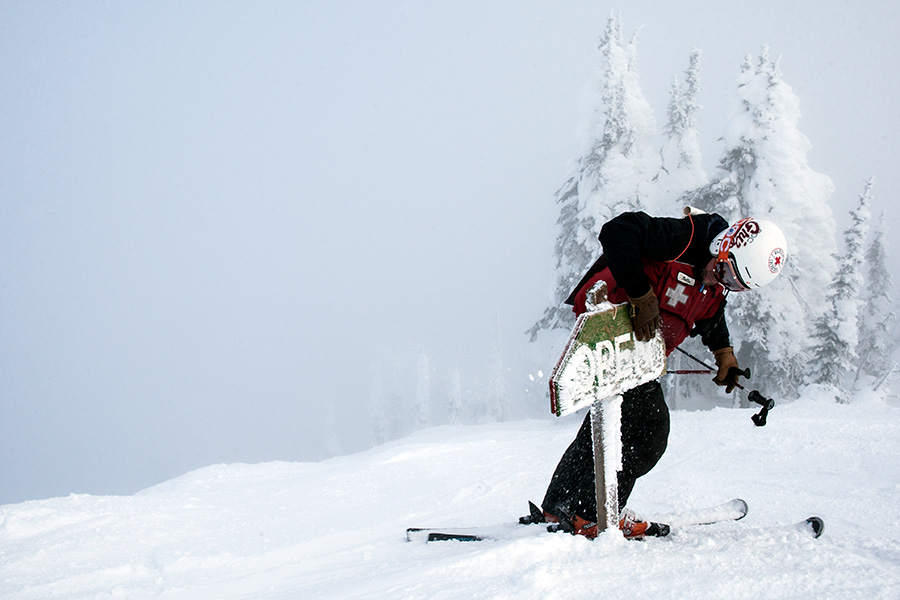A human death in the mountains delivers a devastating blow to the collective conscience of the culture surrounding them — when passion for outdoor play is a community’s stock-in-trade, losing anyone in that context is equivalent to losing one of its own.
In Whitefish, that misfortune came to bear on Dec. 30, at the tail end of a long holiday weekend during which Whitefish Mountain Resort tallied around 30,000 skier visits in a four-day period, when a 28-year-old snowboarder from Alberta went missing on Big Mountain. Early the next morning, a search-and-rescue crew found the man’s body inverted in a tree well on a gladed, ungroomed run within the resort’s boundaries.
The victim, Scott Robert Hornstra, died doing what he loved, according to his family, who praised the response from the resort’s ski patrol and local law enforcement, saying they went above and beyond their duty.
But Hornstra died in a manner that has become increasingly familiar at ski areas across the western United States, where the allure and excitement of skiing off-groomed trails and scouting deep powder also holds inherent and often unsung hazards.
Although maintaining a heightened awareness of those inherent hazards is requisite for anyone seeking out adventure and catharsis in the mountains, skiing or snowboarding inbounds at a resort reduces many of the dangers associated with the domineering backcountry threat of avalanches.
Still, even the most cautious skier can’t erase the risk, and the relative safety of a ski resort can also lead to complacency, according to experts who track inbounds snow-immersion suffocation (SIS) deaths.
During the 2010-11 ski season, SIS quickly rose to the fore of a national conversation about ski area safety, responsibility and risk, in part because the season recorded an unprecedented nine SIS fatalities nationwide, all involving tree wells, which are large concealed pockets of loose, unpacked snow that form around the bases of trees. Two of those deaths occurred at Whitefish Mountain Resort in the span of 10 days.
The previous record-setting year was 2007-2008, when seven SIS deaths occurred.
In the United States, ski areas collectively reported 60.5 million skier visits during the 2010-2011 season, and the western U.S., where all nine of the tree well fatalities occurred that winter, featured a regional surplus of snowfall.
“That was the big year for snow-immersion suffocation accidents,” Dave Byrd, director of risk and regulatory affairs for the National Ski Areas Association, said of the season. “We also set an industry record for skier visits that year. You combine the scores of visitors with a big snow season throughout the Pacific Northwest and maybe there’s some correlation.”
The same safety precautions people use when venturing into avalanche terrain should be considered when skiing off-piste, he said, including the use of beacons, shovels and probes. Most importantly, he added, ski with a partner always.
The likelihood of becoming involved in a fatal incident of any type at a U.S. ski area is rare — 1.06 per million skier and snowboarder visits, according to Paul Baugher, director of the Northwest Avalanche Institute and ski patrol at Crystal Mountain Resort in Washington — but despite being low-risk events, they do occur.
Baugher has been tracking SIS deaths in the United States for decades, and is the only person in the country who maintains data on non-avalanche-related deaths that occur in tree wells or deep snow.
Baugher said there have been eight fatalities in tree wells at Whitefish Mountain Resort since 1978, which he attributed to the ski area’s abundance of deep, unconsolidated powder snow and the quality of its glade skiing. The figure, while relatively low, puts Big Mountain high on the list of ski areas that have had deaths in tree wells and deep snow, and signs now posted around the mountain warn skiers and snowboarders of the hazards.
On average, 38 people die in skiing-related accidents each year in the United States — about the same average number of people who are attacked by sharks annually — with causes ranging from head trauma (most frequent) to suffocation, according to the National Ski Areas Association. That compares to just 3.3 SIS deaths per winter since 1990.
At Whitefish Mountain Resort, managers continue to encourage guests to use extra caution when skiing in the trees and deep snow, and have added signage in recent years warning skiers of tree wells in particular.
“Ski with a partner and keep them in sight. Call ski patrol immediately if someone is missing. Be as precise as you can in describing the trail name and location as well as the description of the missing person,” according to a statement from the resort. “We will continue to help our guests understand the risks and encourage educating themselves on this subject.”
For more information on tree well safety and the peril of snow immersion suffocation, visit deepsnowsafety.org.
